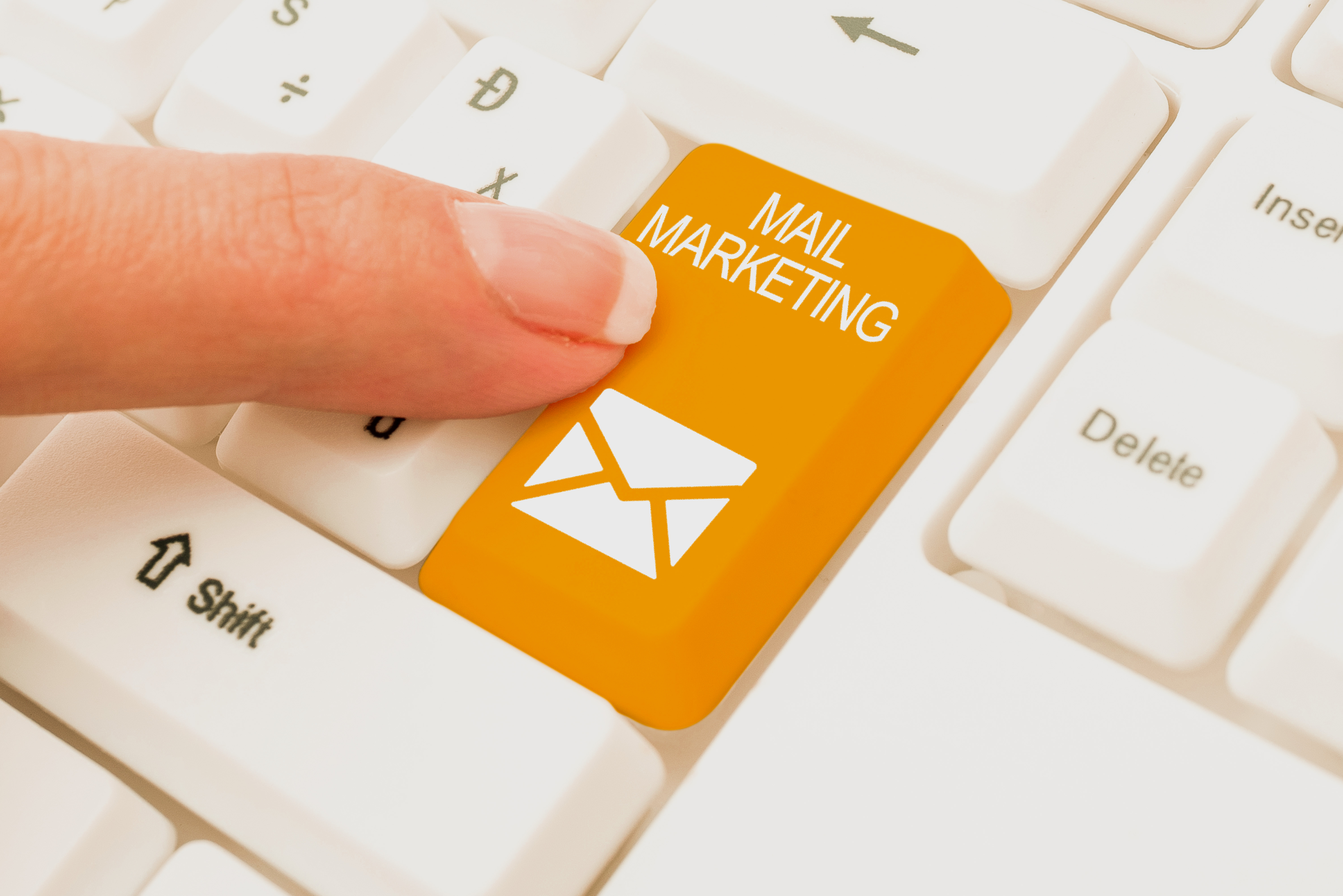
23 May How to Breathe New Life into Your Comatose Mailing List
A good email list is one of the most fabulous marketing tools your business can own.
The occasional moan that ‘email doesn’t work anymore’ just ain’t true. It does – and it can be hugely effective when done well. That’s why it’s a tragedy that so many businesses with contact lists just don’t use them
Why should you care?
Times are incredibly tough right now. Every penny counts and too many of us are being kept awake by fears about how we’re going to pay the bills. So supercharging our marketing is critical. More and better customers mean great business – and the peace of mind you crave.
Want to know how to use this powerful asset to drive great business to your door?
This post will show you how to:
- Take a dormant list and clean it up ready to rock.
- Come up with a strategy to re-engage your audience.
- Recognise who belongs on your list – it’s not a numbers game. No, really, it’s not!
- Get going by taking some serious, sustained, consistent action.
- Prepare yourself to follow through when your leads turn into prospects.
Step 1. So, you do have a list, right?
The answer is yes, you have a list… it might be tiny, it might be scattered, but you have a list.
First, there are your customers.
There are more lurking in your office though. Old contacts sitting on your hard drive, or that box of business cards from your pre-Covid face-to-face networking. Maybe it’s spread across a whole bunch of ‘saved chats’ from Zoom meetings. It’s scattered. It’s disorganised.
But it’s a list.
If you already have a spreadsheet brimming with names and email addresses, great. If not – set a time to pull all that data out of its hiding places and build a database you can use. Dig deep and identify every contact that deserves to be on your list.
Step 2. Clean up your data act
You’ve got your list sorted. If it’s built up over years, here’s a very important step…
Get your list cleaned.
Why is this so crucial? The cowboy days of emailing any old contact willy-nilly have been stamped out (for the most part) by legislation like the UK’s GDPR rules. Both lawmakers and email service providers now do all they can to ensure that the messages that land in your inbox are more likely the ones you want to see.
Use a data cleansing service to scrub your list clean, removing any incomplete, incorrect, out-of-date, or duplicated contacts.
Don’t skip this step.
A poor database will damage your business when you find yourself reported for spam, and blocked from sending anything at all.
Step 3. Know why you haven’t worked your list
This is a bit of analysis you really need to do. It might be painful, embarrassing, perhaps even revealing. But if you don’t figure out why you’ve not been using your list, you run the risk of piling into the same problem again.
So what’s been in your way?
- Have you underestimated the potential your list holds?
- Lack of technical know-how, and the technophobia it brings
- “I don’t like email” syndrome. As in, “I don’t like it, so no one does” – give yourself a quick slap on the wrist
- Worried about irritating your clients or prospects? If you’re delivering interesting, valuable content, they’ll love it. And if not – they’ll unsubscribe
- One I hear a lot – “I don’t know what to say…” that’s when you need to start brainstorming ideas, or getting some creative heads on board
- You plain don’t want to do it.
Found your obstacles? Good – figure out how to get around them. It might be as simple as getting an agency on board to help. The main thing to remember – the rewards will far outweigh the effort!
So let’s do this.
 Step 4. Take care of the tech
Step 4. Take care of the tech
You’re going to need some email marketing software like Mailchimp, Constant Contact or Aweber.
Why?
- It’ll let you schedule your posts. Load up multiple emails, set the date and time to send each of them, and the software takes care of it.
- Set up auto-responders when people sign up for a free download. The software will log the contact, double opt-them in, and ping your download out to them. Simples.
- Built-in templates mean your emails will be tidy, easy to read, and well-constructed. When your messages look great they’re more likely to be read.
- All these platforms give you analytics that will show you who has opened your email, clicked on a link, or unsubscribed. A wealth of information that you can use to work out better ways to talk to your audience.
OK – that’s a whole bunch of technical stuff. If that list makes your blood run cold, consider farming it out. There are agencies or individuals who will happily work with you to maximise the effectiveness of your campaigns.
Step 5. Devise your strategy
The next question is – what are you going to send and how often?
This can feel like a real challenge if you’re not used to producing lots of content on a regular basis. But let’s start with the basics.
- Who is your audience? I can tell you as a professional copywriter, it’s almost impossible to come up with convincing messages when you don’t know who you’re speaking to. You need to get it really clear in your head who your audience are, what their pains, worries and fears are, and how you help them.
- How often are you going to email? You want to stay top of mind without being a nuisance. And you need to be comfortable with what you’re sending (without applying your own preferences of course!)
- Are you going to work this out yourself, or get help? A good marketing agency or a marketing-savvy freelancer will be able to advise the best frequency and type of content to send.
Step 6. Decide on your content
Let’s find the good stuff to send.
You know your customers, but don’t forget to put yourself in their shoes. What would you like to see in your emails if you were on the receiving end? What’s going to engage, interest, amuse and educate you? What’s going to make you love this company and recommend them to your friends?
- Can you ask them a question that tells you what they really want from you?
- What can you repurpose? Tell them about your latest blog post, or social media updates.
- Give them a case study that demonstrates exactly what benefits your product delivers.
- Can you be controversial? Useful? Generous? Topical? Promotional?
If you work with someone on your email campaigns, they will be able to guide you in creating a bunch of content for your emails.
Step 7. Write!
Pointy question here… are you going to write the emails? Or do you know someone who would be much better at that?
With the best will in the world, business owners do struggle to find the time and inclination to sit down and write content for their business. An agency will help you with that. They will have copywriters on their staff who can create the kind of email you need to send. If you want to write your own emails, that’s great. But make sure you read up on the best way to structure and phrase them.
A few tips:
- Batch write – sit down one weekend and write 10 emails, or 20, or 52 – that’s one a week for a year.
- Plan content in advance – but be ready to respond to events and get topical. You’re a financial advisor? A new budget will provide you with lots of great topical subject matter.
- Remember to be interesting, trustworthy, honest – all the things you’d like to see in someone sending you emails to read.
- A critical point – write great headlines – grab attention!
- Then use subheads to keep people reading.
- A doubly critical point – create entirely brilliant subject lines! It’s pretty much the most important part of your message. Why? Because if your email isn’t opened, it won’t matter how great your content is.
- Beware forbidden words!! Things to avoid in your subject lines include over-promising, sensationalisation, or strange formatting. Have a look at this page for a great list of words to avoid.
- • Include a ‘call to action’ if you want your readers to do something specific. Make it crystal clear what, and how to do it.
Step 8. Send!
Send regularly. Send consistently.
Stick to your strategy. Whether you create a weekly bulletin, a tips email, a newsletter, the key is that people will get used to seeing stuff from you regularly. They’ll recognise it, they’ll expect it – and hopefully, they’ll look forward to it.
This is when your email marketing software will work for you – you can write 12 monthly emails in one session, then schedule each of them to go out on the same day of the month.
A solid truth
Content is King, yes. But consistent content stays on the throne a lot longer…
Step 9. Follow up
You’ve got your software sorted, you’ve worked out your strategy, you’ve written your emails.
The final part of the process is to make sure you’re getting a great return on your investment of time or money. Be responsive if you get replies to your emails. Make a note when you get an order that’s been prompted by your email sequence. (Ask people where they heard of you, it’s the simplest way to know if your marketing is working!)
The platform you use will have lots of instructions about how to monitor and understand your analytics. Check how many people are opening your emails – do certain subject lines get better open rates? Tweak them to get the best results.
That’s it – start mining
The contacts you already have in your business are hugely important. They form the bedrock of the potential you have to build your business. And the more contacts you can add, the more potential your list will give you.
 I really want you to understand this…
I really want you to understand this…
Your database could very likely be the gold mine you’re longing for. But if you’re not digging, the nuggets are staying buried.
Earl Nightingale, renowned and highly respected business guru, said “You are, at this moment, standing right in the middle of your own ‘acres of diamonds’.”
He meant that raft of assets all around us that we overlook, ignore, take for granted. We just don’t know what riches are right beneath our feet.
Your list? How big is that diamond?
It’s true – working your list requires effort. You need strategy and planning, and must keep at it consistently. But the rewards, gold, diamonds, or plain cash in the bank, are potentially huge.
So get digging!




No Comments